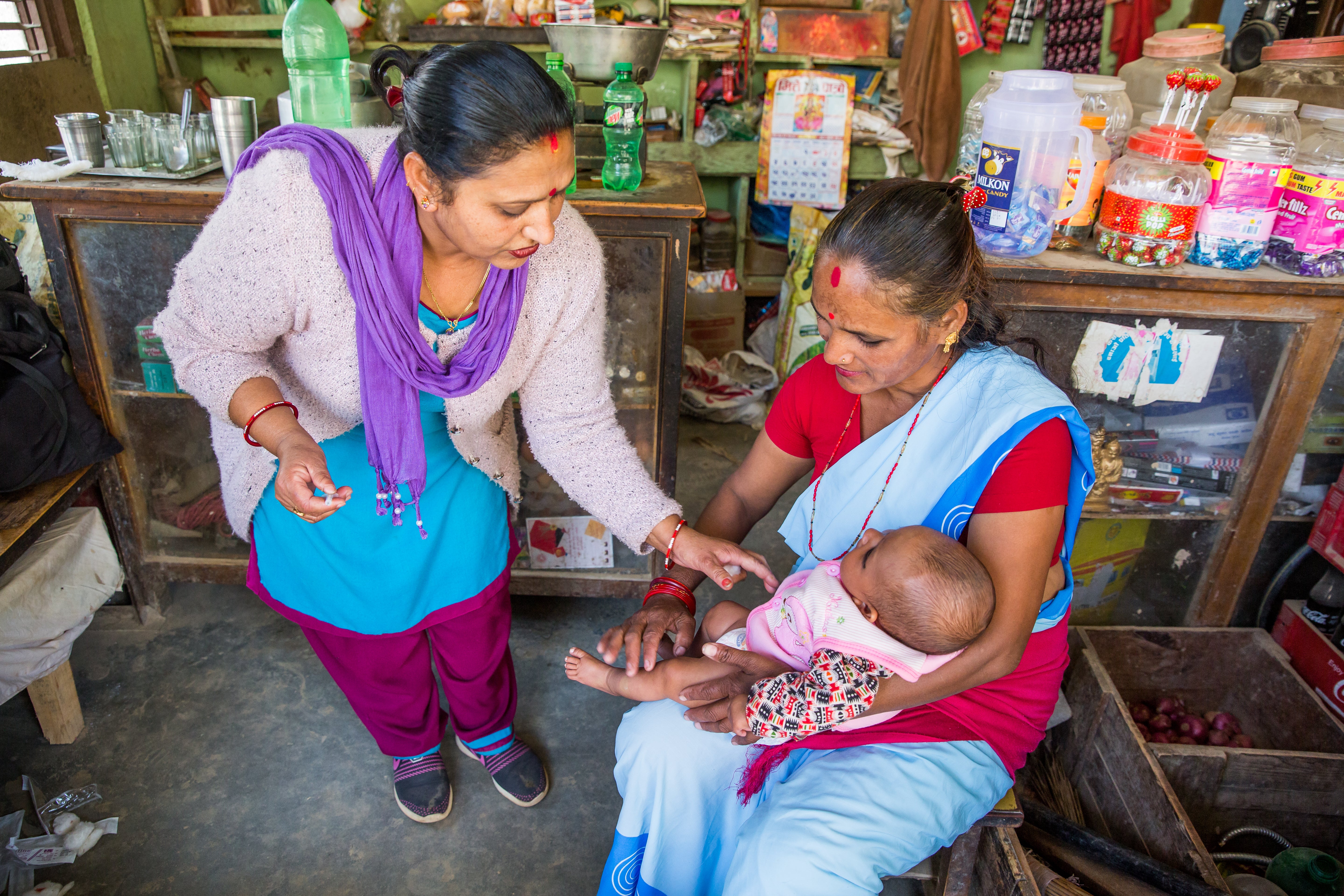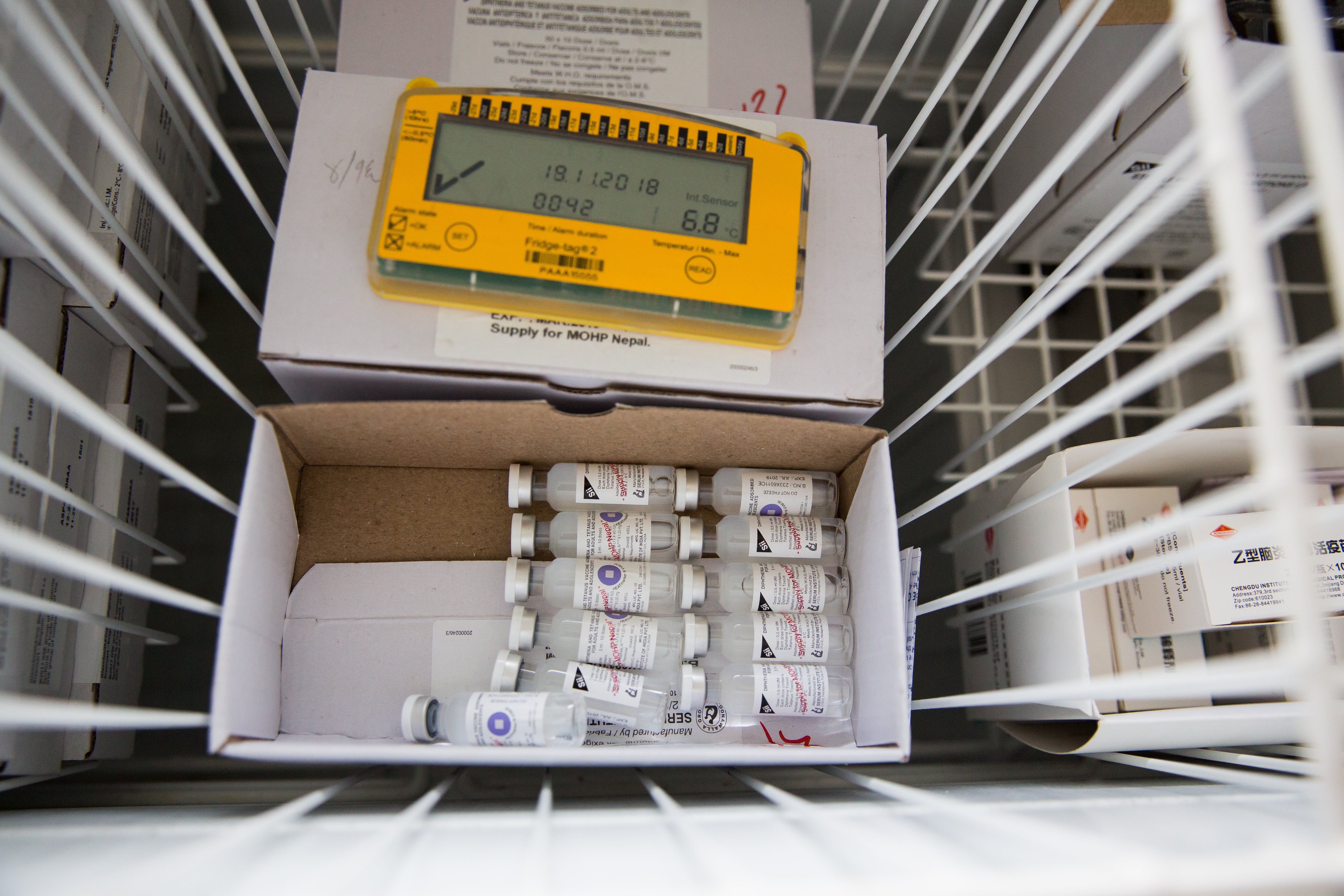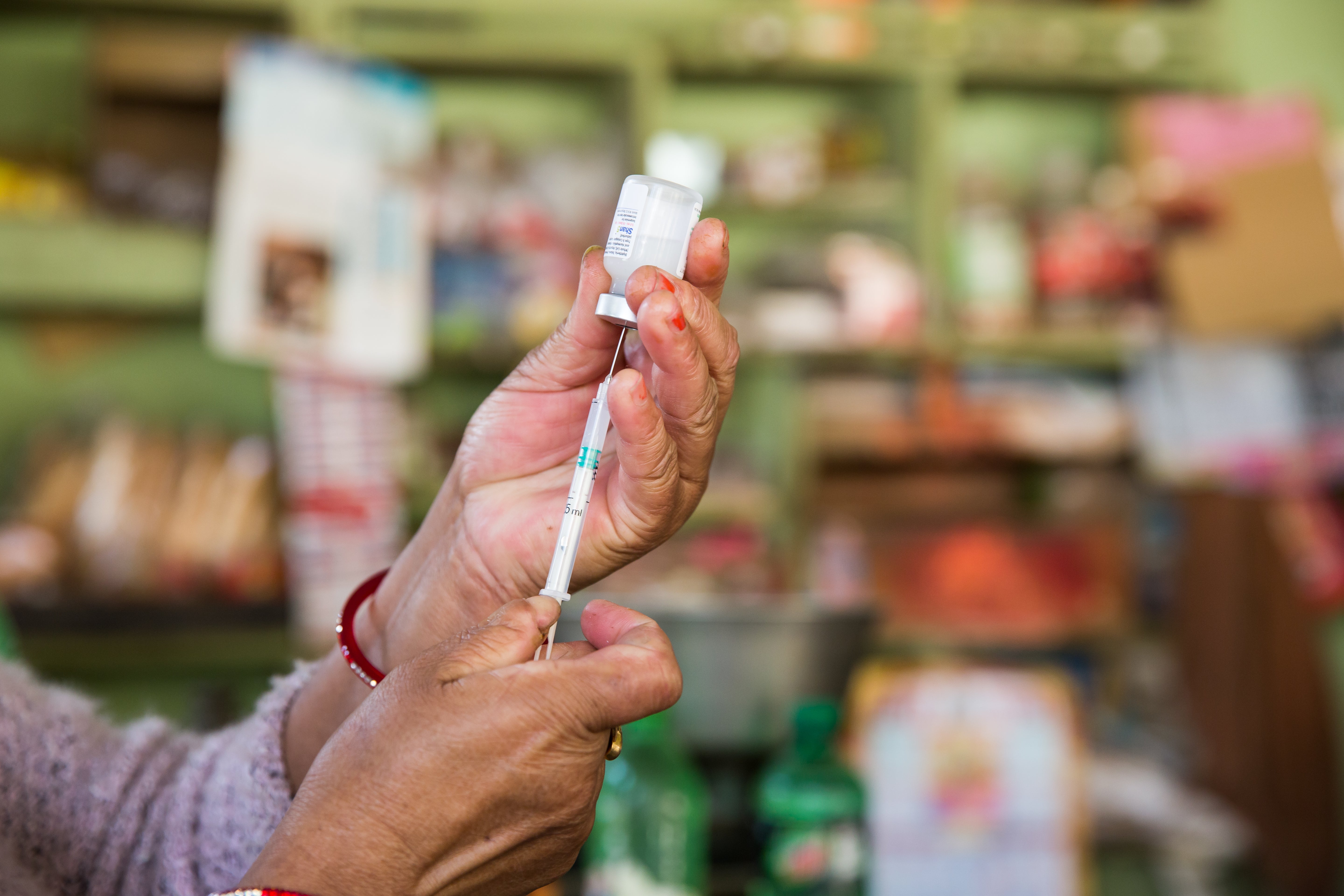Vaccine Delivery in Nepal
Nepal achieved high DTP3 coverage through strong political commitment and targeted community engagement strategies, with a focus on ensuring health access for all.
DTP3 Coverage (%)
CONTENTS
Key Insights
Nepal’s improvement in DTP3 coverage was largely driven by its longstanding political commitment to health and the principle of health as a fundamental right. By focusing on equitable access, Nepal prioritized reaching underserved communities and tailored its strategies to meet their specific needs. This approach, combined with strong collaboration and coordination among stakeholders at all levels, allowed Nepal to expand access, generate demand for vaccinations, and sustain high coverage rates over the years.
Increased Vaccine Uptake Through Targeted Community Engagement
Nepal successfully increased vaccine uptake by empowering its female community health volunteer (FCHV) workforce and implementing tailored community engagement strategies.

Building on its strong tradition of community-focused health initiatives, Nepal leveraged its FCHVs to engage local families, promote vaccine awareness, and address misinformation. FCHVs played a pivotal role in delivering door-to-door vaccination reminders, educating mothers, and tracking unvaccinated children. Alongside these efforts, media campaigns and school outreach programs further expanded awareness, ensuring widespread access to immunization services. This approach has been key to sustaining high vaccination coverage and building trust in health services across communities.
Multisectoral Collaboration for Sustained Immunization Success
Nepal successfully coordinated diverse stakeholders to prioritize immunization as part of a broader health strategy.
Nepal built and sustained close partnerships between the Ministry of Health and Population (MoHP), local communities, NGOs, and multilateral organizations like WHO and UNICEF. These partnerships were essential in aligning efforts, sharing responsibilities, and ensuring the efficient delivery of immunization services across the country. Originally formed to support polio eradication, these partnerships evolved to support routine immunization and other health services, enhancing Nepal's ability to adapt and strengthen its vaccination programs.
The strong collaboration fostered by the MoHP allowed Nepal to streamline efforts across different stakeholders and maintain a consistent focus on equitable access to vaccinations, particularly in underserved areas. This coordinated approach helped build trust, improve service delivery, and sustain high immunization coverage over time.

Health Care Codified as a Right, Supported by Increasingly Accessible Immunization Services
Nepal’s commitment to health as a human right dates back to its alignment with the 1978 Alma Ata Declaration, which emphasized primary health care for all. This foundation was reinforced by the 2007 interim constitution, establishing health care as a right, and the 2015 constitution, which expanded these guarantees.

Guided by these principles, Nepal prioritized free and equitable access to health services, including vaccinations. The 2016 Immunization Act secured funding for the national immunization program, supporting vaccination efforts. Monthly, well-publicized immunization sessions made vaccines increasingly accessible, particularly in remote areas, helping sustain and improve coverage over time.
Exemplars in Global Health
Exemplars in Global Health aims to help public health decision makers around the world identify and implement proven strategies to improve health for people in lower- and middle-income countries. The Exemplars initiative analyzes countries that have made extraordinary progress in attaining important health outcomes in spite of their resource limitations. Our hypothesis is that the lessons contained in this growing list of data-driven narratives will be a resource to government officials, researchers, entrepreneurs, nonprofit leaders, and others committed to improving health within their own countries.
In selecting Exemplar countries, we reviewed data during a specific study period to identify nations that outperformed peers in key areas of public health, controlling for factors like economic growth. We also sought to identify countries from a variety of global regions, in order to draw lessons that are relevant to many different contexts. We then worked with research partners and technical advisors to understand the drivers of their success.
This narrative explores success in early childhood immunization. The Exemplars in Global Health program identified a set of countries that made notable progress in achieving high vaccination coverage through their immunization programs. This narrative describes the drivers of success in one of those countries—Nepal—and highlights strategies that may be applicable elsewhere.
As highlighted by the Immunization Agenda 2030, vaccines are among the greatest public health tools in human history and are essential in any primary health care system. High levels of vaccination coverage—defined as the proportion of the target population that has received recommended vaccines—are necessary to control or eliminate vaccine-preventable diseases within a population.
Achieving and sustaining high coverage requires financial investment, but the return on investment may be unparalleled: for each dollar spent on routine and supplementary vaccinations in low- and middle-income countries from 2011 to 2020, the average country-level return on investment is estimated to be 51 times the cost.
There are many potential benchmarks one could use to identify Exemplar countries and assess the quality of their childhood vaccination programs. We focused on the first and third doses of the combined diphtheria, tetanus, and pertussis vaccine (abbreviated as DTP1 and DTP3) as proxies for the overall childhood vaccine delivery system.
DTP1, administered to infants at six weeks of age, is an indicator of success in introducing parents and children to a vaccination program. DTP3, which is given at 14 weeks, reflects retention in vaccine programs.
The World Health Assembly has endorsed a goal of 90% DTP3 coverage at the national level, with coverage rates no lower than 80% within any individual province, state, department, or other major subnational unit. The subnational target emphasizes that equity is essential everywhere, even in regions that are especially remote, impoverished, or unstable.
While many countries have made significant progress toward achieving these targets, the World Health Organization/United Nations Children’s Fund Estimates of National Immunization Coverage show that progress has fallen short. In 2019, nearly two-thirds of countries met the target of 90% DTP3 coverage. In 2018, only one-third of countries met targets for both coverage and equity. Worldwide DTP3 coverage reached 84% in 2011, which remained stagnant until 2020, when the COVID-19 pandemic drove sharp declines in vaccine coverage in many settings.
While the essential components of a successful vaccine delivery system are widely known, the current literature does not fully describe how and why these strategies are effective. Through this research, we share insights on what has worked well in other countries that have implemented their Expanded Programme on Immunization programs successfully without necessarily increasing spending.
Vaccine Delivery in Nepal

Ask an Expert
Our team and partners are available to answer questions that clarify our research, insights, methodology, and conclusions.
